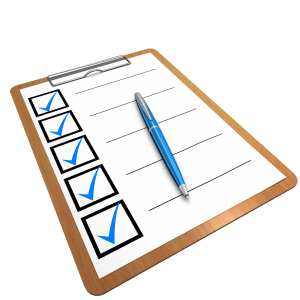1 Emotions and Finance: Spending Plans and Needs vs. Wants
Learning Outcomes:
- Differentiate between needs and wants in daily decision-making.
- Consider how needs and wants influence spending decisions.
- Learn about spending plan categories.
Needs and Wants in Daily Decision-Making
Financial habits and norms are the values, standards, routine practices, and rules to live by on which people rely to navigate their day-to-day financial lives. They support the ability to manage money effectively and respond quickly to the need to make financial decisions or to meet financial challenges (Consumer Financial Protection Bureau [CFPB], n.d.).
Money is tied to human needs and emotions. The skills associated with financial habits and norms allow a person to make financial decisions more easily, based on their attitudes, on their values and emotions, and on social norms and contextual cues. These skills help a person decide what’s desirable and possible financially and guide their day-to-day behaviors. These behaviors could range from decisions about splurging on a treat to decisions regarding how much to save in a retirement account (CFPB, n.d.).
Your personal financial habits are influenced by your values and emotions; influence from your peers; advertisements that you see; your personal money habits; financial decision-making processes; your lifestyle choices, and your personal choices (National Financial Educators Council [NFEC], n.d., pp. 8-10).
Values & Emotions
- There’s a relationship between your values, emotions, and personal finances.
- Your values and emotions will influence your financial decisions.
- To be fiscally responsible, your finances should align with your values and goals.
(NFEC, n.d., p. 8)
External Influences
- External factors can influence your financial decisions. For example, not all financial information is accurate or truthful. Always do a check.
- There are marketing messages that are influencing your spending.
- You can assess external information to make informed decisions that align with your goals.
(NFEC, n.d., p. 9)

Decision-Making Process
- There are factors that influence your decisions.
- Financial decisions affect your future.
- There is a process to making good financial decisions.
- You are able to make financial decisions that align with your goals
- There are strategies you can use to adjust your emotional state to make logical financial decisions.
(NFEC, n.d., p. 10)
Financial Goals
- Goals affect your finances.
- There are tools and techniques to help you set and prioritize your financial goals.
- There are methods to setting and accomplishing personal financial goals.
(NFEC, n.d., p. 11)
Philanthropy
- There are actions you can take to help make this world a better place.
- You can give back in ways that that support your values and goals.
- Giving back can be a part of your overall financial plan.
(NFEC, n.d., p. 12)
| Milestones for financial habits and norms in adolescence and early adulthood | What the milestones may look like in adulthood |
| Demonstrates a positive attitude toward planning, saving, frugality, and self-control | Makes and follows a spending plan, saves for big purchases and for retirement |
| Shows positive money management habits and decision-making strategies | Lives within their means, compares features and costs to make an informed purchase |
| Makes spending and saving decisions that match personal goals and values; resists peer pressure | Measures financial success by own standards instead of others’, spends with values and goals for today and the future in mind |
| Confidently completes age-appropriate financial tasks, such as getting a part-time job and using debit and credit cards | Makes a financial plan, explores employment options, limits credit card use, avoids and manages debt |
(CFPB, n.d.)
Differentiate between Needs and Wants in Daily Decision-Making
- Spending plan: A plan that outlines what money you expect to earn or receive (your income) and how you will save it or spend it (your expenses) for a given period of time; also called a budget.
- Needs: Basic things people must have to survive (such as food, clothing, and shelter), resources they may need to do their jobs (such as reliable transportation and the tools of the trade), and resources to help build and protect their money and property so they can meet future needs (such as emergency savings and insurance).
- Wants: Upgrades and other things that would be nice to have but aren’t necessary for living, income, or protecting what you have.
(CFPB, 2022)
Food is a need . . .

. . . a boat is a want

Consider How Needs and Wants Influence Spending Decisions
How can I spend my money responsibly? Distinguishing between wants and needs can sometimes be difficult. It is important to separate wants from needs in order to make smart financial decisions.
In this activity, students will:
- Differentiate between needs and wants in daily spending choices.
- Consider how needs and wants influence their spending decisions.
Download activity:
Key Takeaways:
- Know what are your needs and what are your wants.
- Include financial goals in your budget such as: savings and large purchases such as a car.
- Realize that your personal finance decisions are based upon your values and emotions.
Please Provide Feedback
What is one tip that you learned from this chapter?
References
Consumer Financial Protection Bureau. (n.d.). Financial habits and norms. https://www.consumerfinance.gov/consumer-tools/educator-tools/youth-financial-education/learn/financial-habits-norms/
Consumer Financial Protection Bureau. (2022, June 9). Find financial literacy activities: Building blocks teacher guide: Spending scenarios. https://files.consumerfinance.gov/f/documents/cfpb_building_block_activities_spending-scenarios_guide.pdf
National Financial Educators Council [NFEC]. (n.d.). Financial literacy standards & framework for learners. https://www.financialeducatorscouncil.org/wp-content/uploads/DOC_PKG_EXC_-NFEC-Learner-Framework-Standards-for-High-School-College-Adults-_3.4.09.pdf
